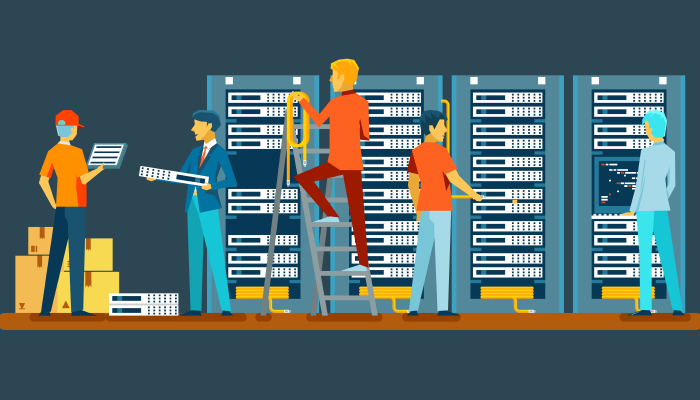Data Centre

SOLUTIONS
Data Centre
Organizations utilise a Data Centre as a physical location to store their important applications and data.
The architecture of a Data Centre is based on a network of computing and storage resources that allow for the delivery of shared data and applications. Routers, switches, firewalls, storage systems, servers, and application-delivery controllers are the main elements of a Data Centre design. The Data Centres of today are substantially different from those of recent years. Virtual networks that support applications and workloads across pools of physical infrastructure, as well as a multicloud environment, have replaced the traditional on-premises physical servers in terms of infrastructure. Today, data is present and networked across several Data Centres, the edge, and public and private clouds. These many locations, both on-premises and in the cloud, must be connected by the Data Centre. A group of Data Centres even makes up the public cloud. Applications that are hosted in the cloud using the cloud provider's Data Centre resources.


Communication refers to the exchange of information between two points. The transmitter, the medium, and the receiver, who will receive the information on the other end, are the three essential components required for communication.
What are the benefits of Data Centres for businesses?
The following business applications and activities are supported by Data Centres in the enterprise IT world:
- Sharing files via email
- productivity software
- Management of customer relationships (CRM)
- databases and enterprise resource planning (ERP)
- Big data, machine learning, and artificial intelligence
- Services for collaboration, communications, and virtual desktops
What constitutes a data center's fundamental elements?

Routers, switches, firewalls, storage systems, servers, and application delivery controllers are all part of the design of a data centre. Data Centre security is crucial in Data Centre design because these components house and manages business-critical data and applications. They deliver the network infrastructure as a unit. This links storage, Data Centre services, physical and virtualized servers, and external connectivity to end-user locations. Infrastructure for storage. The contemporary Data Centre runs on data. This priceless resource is kept in storage systems. resources for computers. The heart of a Data Centre is its applications. The CPU, memory, local storage, and network connectivity on these servers power applications.
How exactly do Data Centres work?
The performance and integrity of the primary Data Centre components are often protected by the deployment of Data Centre services. equipment for network security. To defend the data centre, these include firewalls and intrusion detection systems. assurance of application delivery. These strategies use automatic failover and load balancing to ensure application resiliency and availability in order to preserve application performance.











